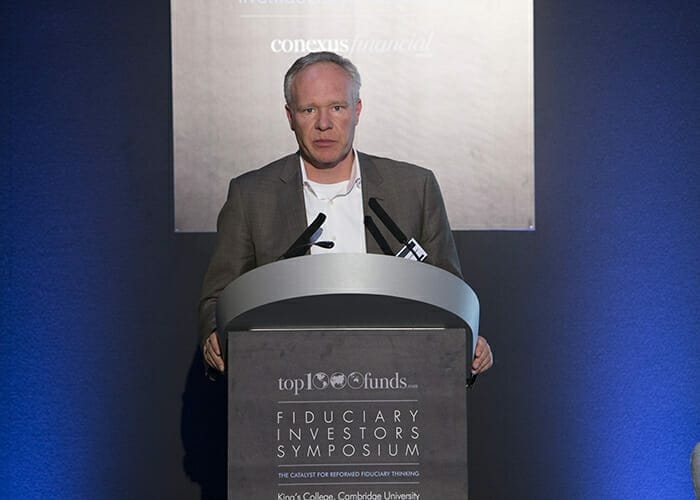Being a responsible investor is an integral part of fiduciary responsibility, according to Erik van Houwelingen, chair of the investment committee at the giant Dutch fund, ABP.
Speaking as part of a panel at the Fiduciary Investors Symposium at Cambridge University, he said ESG has been a part of the fund’s history, and the way it invests for a long time. But in 2014, with emerging trends globally and issues such as the treatment of workers in textile companies, the board met to examine ESG in a more fundamental way.
“We as a board looked at the way to go forward, and we went through an investigation to see if ESG investing was a by-product or truly at the heart of everything.
“At the end of 2014 we did a revision project of the ESG policy, it took us 18 months to conclude, and as a result we view responsible investing, not ESG, as a fundamental part of our fiduciary responsibility,” he said. “There is a debate in the US and UK whether it is a fiduciary responsibility. We have decided being a responsible investor is an integral part of fiduciary responsibility.”
He said there was a plethora of academic research investigating the correlation between ESG and risk profile, and the fund also did their own work, looking back and forward.
“We arrived at the conclusion, and decision, and belief, that going forward responsible investing is a part of every investment decision we make at APG and ABP. Taking that to our participants has been very challenging.”
Van Houwelingen said the call centre has been flooded with participants in disbelief saying they don’t believe that ESG and risk/return go together.
“There is work to be done and it means we need to increase engagement with plan participants to make sure they come with us on the journey.”
The €373 billion ($424 billion) fund has a specific policy on climate which outlines that by 2020 the fund will strive for a 25 per cent reduction in the carbon footprint of its liquid equities portfolios, which is about a €100 billion ($113 billion) portfolio.
The fund also has a target to double sustainable investments from €20 to €58 billion by 2020. It currently has €5 billion in renewable energy.
“We think it is more important to have clear targets to be striving for, and it’s not necessarily about the numbers.”
Meanwhile Mark Mansley, chief investment officer of the Environment Agency Pension Fund (EAPF), who sat on the panel with van Houwelingen, said the fund developed a formal climate policy in the lead up to COP21.
“We found you could reduce your climate risk with little impact on financial risk. We set a simple and high-level policy, to be part of the solution not the problem,” he said.
It focused on three areas: decarbonising the portfolio, which included reducing the exposure to oil and gas by 50 per cent and coal by 90 per cent; setting a goal of engaging with companies about what they are doing; and a positive investment target of 15 per cent.
“We are quite comfortable to go this far, probably beyond the rest of the investing community. The opportunities have to make sense financially, there has to be a sufficient risk/return, but there are lots of good opportunities in clean energy, and real estate for example.”
“Our members are not unfamiliar with climate change given it is the Environmental Agency. But as an investor we have always had to look at climate change from an investment point of view, and we have been doing it for about a decade now.”
Mansley highlighted the Aiming for A project which is asking key fossil fuel companies to meet standards.
EAPF has also been active putting forward shareholder resolutions for transparency on climate change risks and opportunities to companies’ businesses, and has had success with the BP, Shell and Statoil.
“We are starting to see some real change there; now we are asking did we aim too low?”
Mansley called on investors to encourage policy action on climate change, and the EAPF has joined with other investors calling for a price on carbon.




